Prostate Pathology: What is New in the 2022 WHO Classification of Urinary and Male Genital Tumors?
- PMID: 36645399
- PMCID: PMC10342214
- DOI: 10.32074/1591-951X-822
Prostate Pathology: What is New in the 2022 WHO Classification of Urinary and Male Genital Tumors?
Abstract
In 2022, after a six-year interval, the International Agency for Research on Cancer (IARC) has published the 5th edition of the WHO Classification of Urinary and Male Genital Tumors, which provides a comprehensive update on tumor classification of the genitourinary system. This review article focuses on prostate carcinoma and underscores changes in the prostate chapter as well as those made across the entire series of the 5th edition of WHO Blue Books. Although no major alterations were made to this chapter, some of the most notable updates include restructure of contents and introduction of a new format; standardization of mitotic counts, genomic nomenclatures, and units of length; refined definition for the terms "variant", "subtype", and "histologic pattern"; reclassification of prostatic intraepithelial neoplasia (PIN)-like adenocarcinoma as a subtype of prostatic acinar adenocarcinoma; and recognition of treatment-related neuroendocrine prostatic carcinoma as a distinct tumor type. Evolving and unsettled issues related to grading of intraductal carcinoma of the prostate and reporting of tertiary Gleason pattern, the definition and prognostic significance of cribriform growth pattern, and molecular pathology of prostate cancer will also be covered in this review.
Keywords: WHO classification; cribriform; intraductal carcinoma; pathology; prostate cancer.
Copyright © 2023 Società Italiana di Anatomia Patologica e Citopatologia Diagnostica, Divisione Italiana della International Academy of Pathology.
Conflict of interest statement
The authors declare no conflict of interest.
Figures
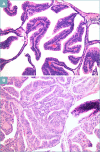
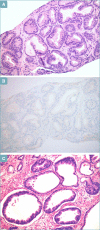
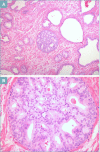
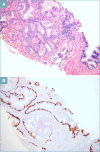
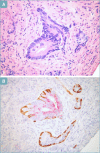

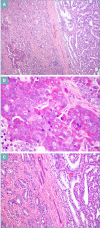
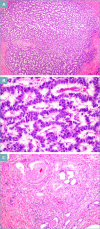
References
-
- Cree IA. Forewards with changes from the book, including corrigenda. In: WHO Classification of Tumours Editorial Board. Urinary and male genital tumours. 5th ed., vol. 8. Lyon (France): IARC Press, 2022. https://tumourclassification.iarc.who.int/chapters/36.
-
- Netto GJ, Amin MB, Kench JG. Tumours of the prostate: Introduction. In: WHO Classification of Tumours Editorial Board. Urinary and male genital tumours. 5th ed., vol. 8. Lyon (France): IARC Press, 2022. https://tumourclassification.iarc.who.int/chapters/36.
-
- Den Dunnen JT. (2022, May 1). Glossary. Sequence variant nomenclature. Retrieved October 11,. 2022, from https://varnomen.hgvs.org/bg-material/glossary/
-
- Srigley JR, Gill AJ, Amin MB, et al. . Chapter 1: Introduction to urinary and male genital tumours. In: WHO Classification of Tumours Editorial Board. Urinary and male genital tumours. 5th ed., vol. 8. Lyon (France): IARC Press, 2022. https://tumourclassification.iarc.who.int/chapters/36.
-
- Kench JG, Kristiansen G, Berney DM, et al. . Prostatic acinar adenocarcinoma. In: WHO Classification of Tumours Editorial Board. Urinary and male genital tumours. 5th ed., vol. 8. Lyon (France): IARC Press, 2022. https://tumourclassification.iarc.who.int/chapters/36.
Publication types
MeSH terms
LinkOut - more resources
Full Text Sources
Medical

